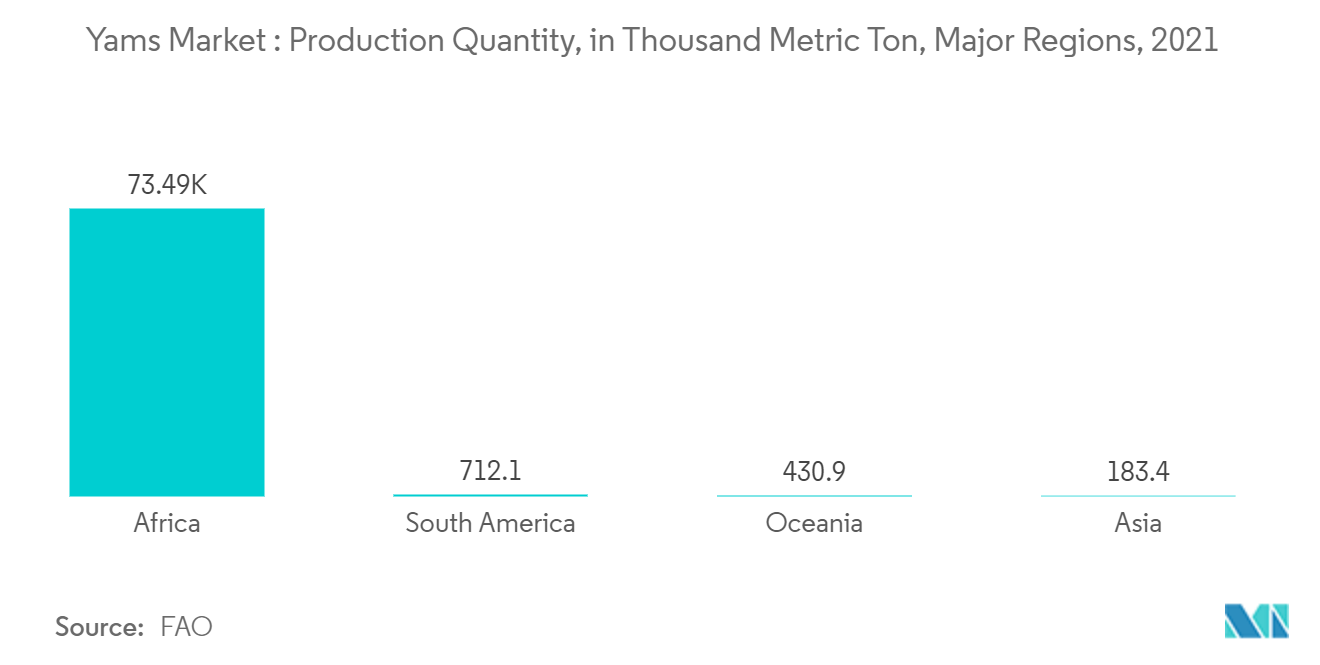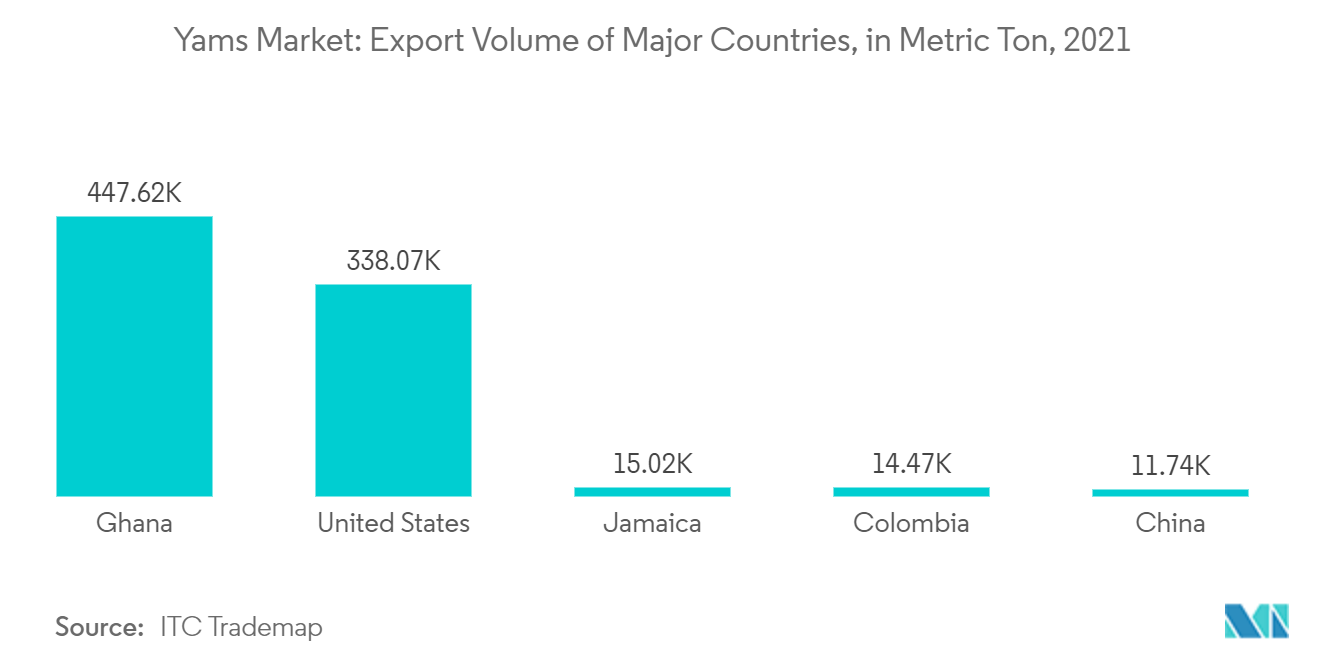Market Trends of Yams Industry
This section covers the major market trends shaping the Yams Market according to our research experts:
Rising Health Benefits of Yams across the Globe
- Yams are a kind of tuber vegetable rich in fiber, protein, vitamins, minerals, magnesium, potassium, copper, folate, and thiamine which are important for supporting bone health, growth, metabolism, and heart function.
- Yams contain a unique compound called diosgenin, which has been found to promote neuron growth and enhance brain function. Additionally, it improves hormonal balance to treat menopause, PMS, infertility, and low libido in females, owing to greater yams production across the globe, which will propel the demand for yams in the market.
- Yams are grown by planting pieces of tuber or small whole tubers ('seed yams') saved from the previous season. Small-scale farmers, the majority of producers, often intercrop yams with cereals and vegetables.
- Due to declining soil fertility, increasing pest pressures, and the high cost of labor, yam production is declining in some of the traditional producing regions. To eradicate this farming culture, the growers are modulating precision agricultural and integrated pest management (IPM) techniques to stabilize crop productivity in the regions.
- According to the Food and Agricultural Organization (FAO), countries like Nigeria and Ghana of the African region holds a significant share in the production as yam cultivation started 11,000 years ago and is one of the primary commodity in the region. Benin, Cameroon, Central African Republic, Côte d'Ivoire, Chad, and Ethiopia, are some of the major producers of yam in the world.
- According to the International Institute of Tropical Agriculture (IITA), most of the world's production comes from West Africa, representing 94%, with Nigeria alone producing 71% in 2021.

Rising Export Trend for Yams
- According to the ITC Trademap, in 2021, Ghana, the United States, Jamaica, Colombia, China, Costa Rica, and India were the major yam exporters globally, accounting for 447,6200 metric tons valued at USD 199,179 thousand.
- Yam tubers comprise about 21% dietary fiber and are rich in carbohydrates, vitamin C, and essential minerals. Most of the African yam produced is consumed domestically, accounting for 15 million tons out of 18 million tons worldwide.
- Ghana accounts for a major share of 24.4% export of yam, followed by the United States (20.1%) and Jamaica (11.0%). According to the Ghana Export Promotion Authority in 2019, the United Kingdom was the main export destination for yams from Ghana valued at USD 5,576 thousand, closely followed by the United States with USD 3,225 thousand. Together, these markets comprise 69.2% of the total Ghanaian export value, 27,282 metric tons in 2019. The increased demand for yams globally is expected to increase the export opportunity.


